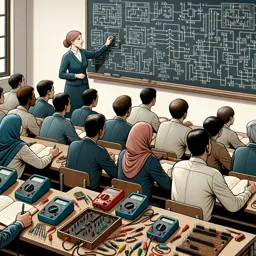Introduction
Electricians are at the heart of modern infrastructure, ensuring that homes, offices, and industries have safe and reliable electrical systems. Before stepping into the world of electrical engineering, every electrician must be familiar with the essential tools and safety equipment required for efficient and safe operations. In this article, we will explore the must-have toolkit and the vital safety gear that every aspiring electrician should know.
Core Tools of the Trade
- Screwdrivers and Nut Drivers: Crucial for fastening and loosening different types of screws and bolts found in electrical work.
- Pliers: Linesman, needle-nose, and diagonal cutting pliers are indispensable for gripping, twisting, and cutting wires.
- Wire Strippers: Allow electricians to remove insulation from wires without damaging the core.
- Circuit Testers and Multimeters: Essential for verifying the presence of voltage, checking continuity, and measuring current and resistance.
- Fish Tape: Enables electricians to route new wiring through walls and conduits with ease.
- Measuring Tapes and Levels: Help maintain accuracy and proper alignment when running wire and installing electrical boxes.
- Power Drills: Used for drilling holes in walls, floors, or other surfaces to install electrical infrastructure.
Indispensable Safety Equipment
- Insulated Gloves and Tools: Protect against electrical shocks when working on live circuits.
- Safety Glasses or Goggles: Shield the eyes from flying debris, sparks, and accidental electrical arcs.
- Helmet or Hard Hat: Guards the head against falling objects and accidental bumps, especially on construction sites.
- Work Boots with Non-Conductive Soles: Prevent electrical shocks from reaching the ground through your body.
- Lockout/Tagout (LOTO) Kits: Ensure that electrical systems remain de-energized while maintenance or installation work is performed.
- Fire Extinguisher: A Class C fire extinguisher is necessary for electrical fires.
Safety Protocols and Best Practices
Possessing the right equipment is just one aspect of working safely. Electricians must consistently follow best practices, including:
- Ensuring power is turned off before beginning any work.
- Testing circuits with appropriate tools even after power has been shut off.
- Wearing all necessary personal protective equipment (PPE) at all times.
- Maintaining clean, dry, and organized workspaces.
- Regularly inspecting tools and equipment for damage or defects.
Conclusion
The right combination of high-quality tools and robust safety equipment forms the foundation of a successful career in electrical engineering for electricians. By investing in these essentials and adhering to safety protocols, you set yourself up for a productive, efficient, and secure work environment.
































